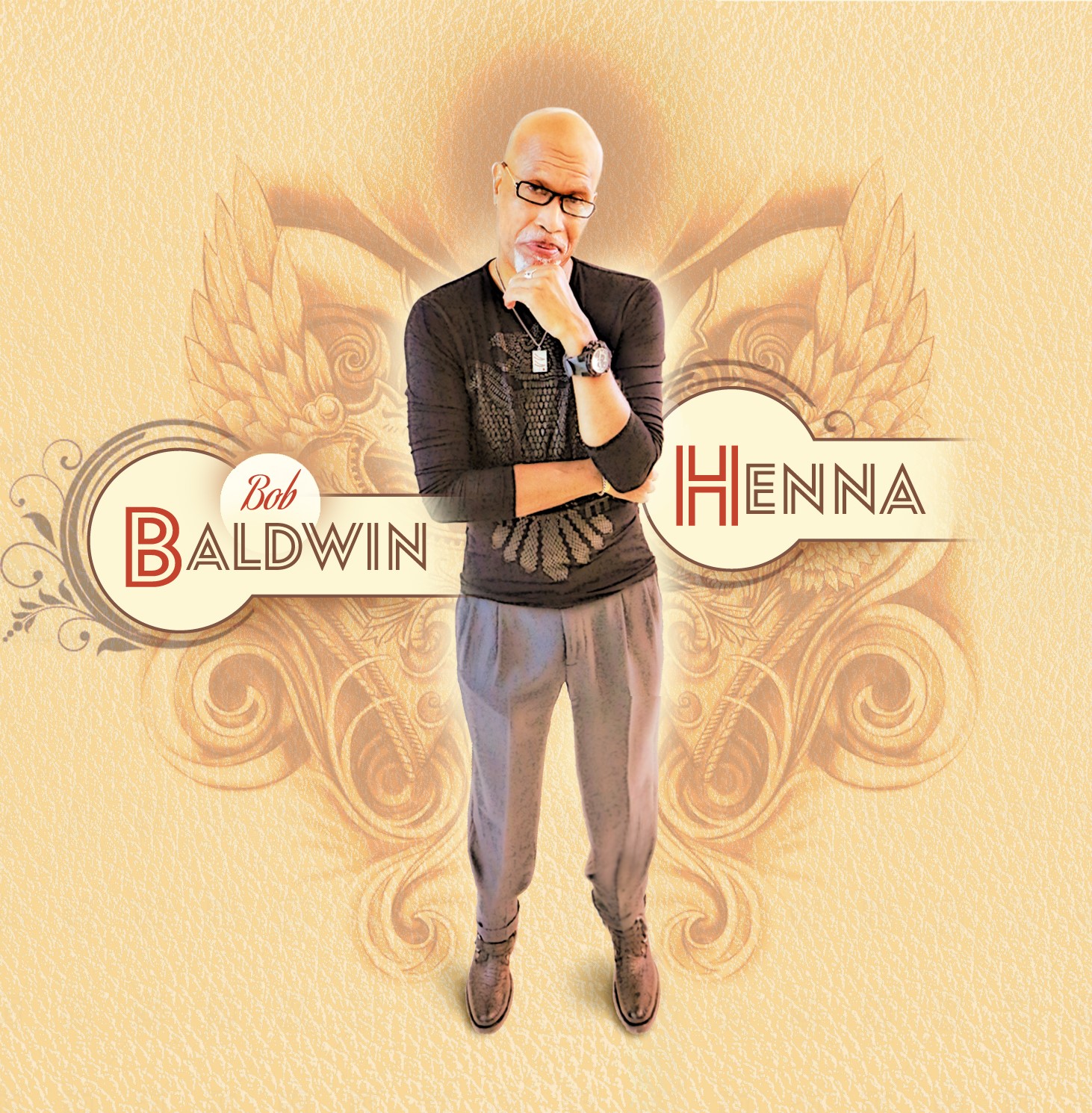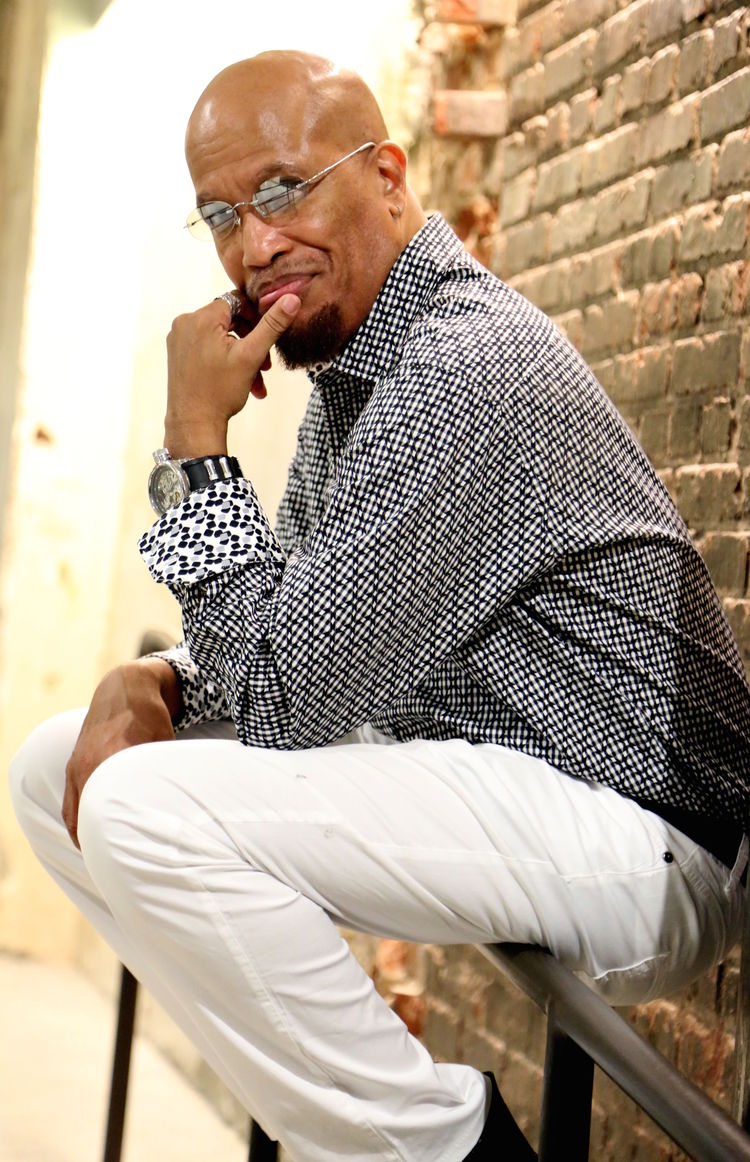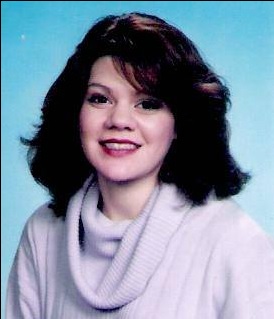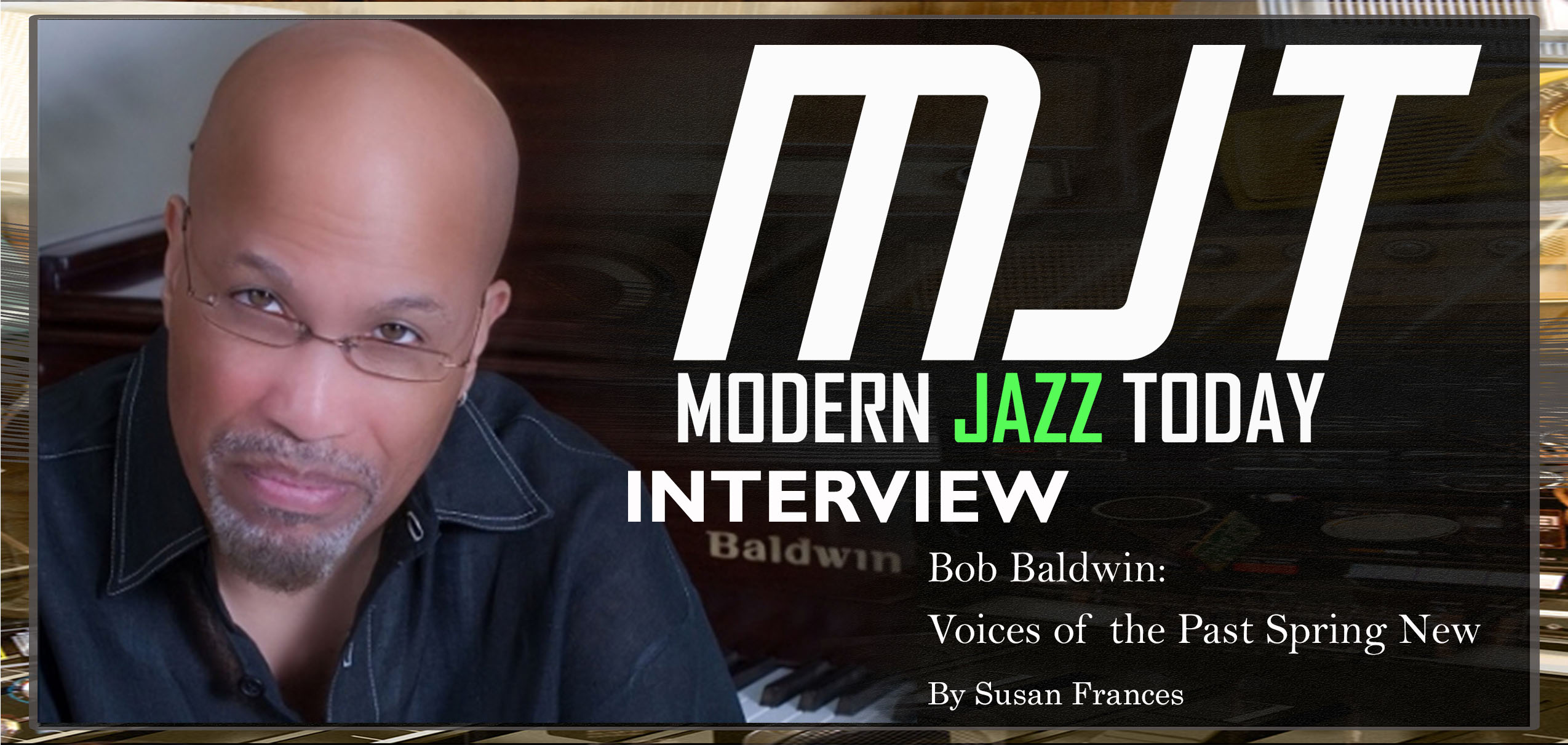Bob Baldwin: Voices of the Past Spring New
by Susan Frances
 Like a daffodil bulb that contains numerous buds in its single capsule, so too does Bob Baldwin’s brand of Jazz. A prolific arranger, composer, producer, keyboardist, business manager, and founder of NewUrbanjazz.com, Baldwin is a well-rounded artist. His love of Jazz steered him towards becoming a professional musician, and his down to earth pragmatism motivated him to hone his skills as a savvy business manager. His latest release Henna does not merely revisit the music of his youth but sprouts new buds, applying the principles he discovered from the voices of the past.
Like a daffodil bulb that contains numerous buds in its single capsule, so too does Bob Baldwin’s brand of Jazz. A prolific arranger, composer, producer, keyboardist, business manager, and founder of NewUrbanjazz.com, Baldwin is a well-rounded artist. His love of Jazz steered him towards becoming a professional musician, and his down to earth pragmatism motivated him to hone his skills as a savvy business manager. His latest release Henna does not merely revisit the music of his youth but sprouts new buds, applying the principles he discovered from the voices of the past.
“This one was a throwback to the ’70s,” he describes Henna, “one of the great decades for contemporary jazz.”
He explains how the smooth jazz tune “Sorry (Not Sorry)” from the recording came together. “I was listening to some old Herbie, YellowJackets music and Weather Report and felt something other than your usual 4/4 music rhythm. So adding some 7/8 grooves to the mix gave us that ‘bumpiness’ with a hint of unexpected rhythm changes. The title came about when I found myself apologizing to people for telling the truth. Sometimes the truth really really hurts, but we all have to swallow that truth pill, so that was the title inspiration.”
He muses, “I do find myself reaching back and being touched by those classic recordings. I think Henna engulfs some of those ‘wayback’ feelings.”
Those “wayback” feelings are deeply rooted in Baldwin’s soul. He regards, “Before any other genre entering my soul, Jazz was the sound of the Baldwin house. My dad [Bobby Baldwin] was a big fan of Oscar Peterson, Art Tatum, Miles, Dizzy, Parker. He used to play duets with Art Davis (Coltrane’s bassist) and Keter Betts, who was married to Ella Fitzgerald. Pops was on the cusp of breaking through before falling ill to encephalitis in 1972, which impacted his motor skills. He had to retire from playing at 48, eventually passing in 2008.”
It was his father who first turned Baldwin onto jazz music. He opens up about how he was first exposed to jazz music. “It started as a very young age,” he recollects proudly, “like five! My dad, Bobby Baldwin, was a pianist that worked locally, but in hindsight, working locally in the New York area was a big deal. He didn’t want the family to lack, so he feared being a full-time jazz pianist, so by day, he paid the bills as an engineer, but played in the jazz clubs in Harlem at the Apollo Theater and up in his home county of Westchester.”
Growing up in Westchester County in New York state, he recalls, “As I got older and got hip to other genres, Soul music, Motown, Stax, Aretha, Earth, Joe Sample, Herbie Hancock, Wind & Fire, Ramsey Lewis, George Duke, Bobby Lyle were heavy influences as a teenager.”
It was these voices that made a lasting imprint on Baldwin. “Later,” he illuminates, “Eliane Elias, Jeff Lorber Fusion, Marcus Miller, Bob James, the YellowJackets and Lyle Mays were later influences, not only for their music mind but their business acumen, which is far more important for me. Understanding the business side of it is THE key to longevity, and because I understand that language, as long as I can play, I believe I have at least 20 more CDs inside of me to produce.”
For now, Baldwin is concentrating on the work he has currently released to the public. “The last two projects,” he provides, “Abbey Road and the Beatles and Henna were cut from the same fabric. I used my guys from the New York crew: Dave Anderson (Bass) and Tony Lewis (Drums), with Café da Silva (Percussion) on six tracks, and 5 from the previous record.”
“My engineer,” he broaches, “knew how to capture a warm sound with the piano, bass, and drums, and since we know each other going back three decades, it was a warm vibration. All the tracks are newly recorded. However, Henna was written 15 years ago.”
 He highlights a handful of the singles from Henna. “‘In the Print’ [is] over 20. ‘I Heard You Twice’ was initially a reprise on an album a few years back, but I extended and re-recorded that. ‘Club Life’ was written on a Marion Meadows album in 2000, but again, re-recorded and added 10 soloists on a smooth jazz track, which is unprecedented for smooth.”
He highlights a handful of the singles from Henna. “‘In the Print’ [is] over 20. ‘I Heard You Twice’ was initially a reprise on an album a few years back, but I extended and re-recorded that. ‘Club Life’ was written on a Marion Meadows album in 2000, but again, re-recorded and added 10 soloists on a smooth jazz track, which is unprecedented for smooth.”
He considers, “Adding musicians that I’ve admired over the years like Meadows mentioned above, Tom Browne, Walter Beasley, Nils, U-Nam, Oli Silk, Brooke Alford, Ragan Whiteside, Lori Williams, Barry Danielian, Rohn Lawrence, and Joey Sommerville all on one track was a super treat, especially piecing it all together.”
As an arranger and producer, Baldwin takes the many voices of these musicians and makes them sound completely united, capturing a warmth that is unlikely to resist. He admits, “Everything for me always hearkens back to my childhood, not only the musical pulse but how they recorded records. That warm analog sound.”
He purports, “I’m always experimenting with how to keep the recordings as warm as possible,” and endorses, “You start incorporating new gear to achieve that warmth. I also used a fantastic mastering company that gave me nice analog vibes (MasterDisk). They moved up from the big city and nestled themselves in the quiet environs of Westchester. They are a huge asset to the final process of warming things up.”
The warmth in the music he experienced while living in Westchester County is in Baldwin’s skin. The music introduced him to the elements he enjoys in music. He remembers, “The scene in Westchester was prevalent in the ’60s, playing or sitting in with Frank Foster (Count Basie), Cab Calloway, Hugh Masekala when he was hanging out in Greenburgh. Greenburgh was this hot spot. Dad had a pretty swanky camera called the Hasselblad, a camera that, at that time, was literally 10% of the value of his home. Camera [was] about $4,500.00 in 1967.”
“He was an avid and outstanding photographer,” he shares about his father. “Through him, I met Gordon Parks, the legendary photographer, the first black photog whose work appeared on Time-Life, who also lived nearby. Greenburgh and White Plains were hotbeds for Jazz at that time. That was my early impression of Jazz and the great people who graced that genre of music.”
Influenced by the keyboard stylizing of his father, Baldwin was also affected by the works of other artists. “What’s Goin’ On [from] Marvin Gaye and the Stevie Wonder records between 1971-1976 were the most impactful keyboard records for me as a teenager. Stevie’s application of the keyboard was absolutely brilliant for a 20-year-old.”
Though the voices of the 1970s are his barometer for measuring good music. Baldwin shows he moved with the times, enjoying the jazz music from the subsequent decades. He expands, “for style and sound quality, in no specific order, I’m still stuck on some of the older generations, but I do like Kamasi Washington, Eliane Elias, Pat Metheny Group, Jeff Lorber, Quincy Jones, Will Downing.”
music from the subsequent decades. He expands, “for style and sound quality, in no specific order, I’m still stuck on some of the older generations, but I do like Kamasi Washington, Eliane Elias, Pat Metheny Group, Jeff Lorber, Quincy Jones, Will Downing.”
He adds to his litany of influences, “I have to give kudos to Danny Weiss, who, in my opinion, is the brainchild of Shanachie Records Jazz division. He tried to do the same thing at Malaco Records, but they weren’t ready to take on the vision, and as a result, they missed out on millions of dollars. Dave Wilkes was also influential, and Larry Maxwell, who passed in the 1990’s was a strong influence in my Atlantic Jazz days as well as Sylvia Rhone, who signed me to Atlantic in 1989. She was an early role model and extremely happy for her success.”
It was Baldwin’s experience as a recording artist signed to Atlantic Records that spurred him to form his own label, which he called City Sketches. He points out, “City Sketches, Inc was established in 1997 following a distasteful experience at a record company. Having an accounting and finance auditing background, I was always intrigued by the concept of royalty statements. After looking through my first account statement, what I saw was a lot of tricks, slick accounting, and something that looked damn near like an accounting Ponzi scheme. In hindsight, it’s the best thing I ever did for the longevity of my career.”
Before forming City Sketches, Baldwin had worked at the telecommunications companies Sprint and MCI, where he learned about the operating details of a business. “The business side of Sprint and MCI,” he illustrates, “come into play today but more than sales, more on the side contract law, auditing, accounting and things like that were critical for me today.”
“The same year I walked away from Sprint is when I started City Sketches, Inc.” He assesses, “Walking away from corporate America was the best thing. Corporate America is like professional sports. Most of the time, they suck every bit of strength out of your being, spit you out when there’s nothing left. In the case of Corporate, it’s 20, 30, 40 years of service, and you got nothing left for your family or your own life. It was a time to take charge of my life and walk away and roll the dice on my own skill.”
“Those statements were the meat and potatoes of how labels get paid,” he imparts, “The sequence of numbers within those statements revealed tricks on how an artist barely breaks even, all while a label makes a 400% profit on the project. The problem with that concept is that the artist is in control, not the label. The label is nothing without the creators of the music, we are the farmers and the cultivators of the art, but far too often, we give away so much and are left with nothing.”
He notes, “It really hit home for me last year when my cousin, Larry Willis, passed away. He was a great pianist and wonderful musician and traveled worldwide, but like so many artists, he died without a will, and the family had to scramble to raise money for his burial. Those are the stories that break my heart in two. The cultivators of this great genre should be more profitable, at least, have a bigger piece of the tiny jazz pie.”
“In hindsight,” he determines, “it’s the smartest thing I’ve ever done. CSI now owns 26 of the 31 released projects. I have to say that following my friend, Bob James, he inspired me to take ownership of your creations. He’s the smartest artist I know, along with Herb Alpert, Dave Grusin, and Quincy Jones. They are the crème de la crème when it comes to music business acquisitions for Jazz.”
Like Quincy Jones, Baldwin also has produced other artists as he ruminates, “I also love producing and/or collaborating the next genre of talent like Ragan Whiteside, Lori Williams, and my collaborations with Meadows, Downing, Phil Perry, Grover, Chuck Loeb, and Gerald Albright are all highlights in terms of collaborating.”
It was a natural progression to move from making and producing records to joining jazz festivals, some of which have been amazing experiences for Baldwin and others that have left him distrustful of the people in the business. The Croton Point Park Jazz Festival was one that left an indelible mark on him.
“Croton Point Park Jazz Festival was a blessing and a curse,” he confesses. “I was not the bank-roller of that project, and it had big potential. That would be Janice Peppers. I know for a fact that she got robbed blind by a very popular artist who took 90% of her money, refused payment for the remaining 10% (a restraint of trade issue, a contract breach) she left the park, didn’t sing a note. She almost ruined Ms. Peppers’ life,” he reveals.
He attests, “Never seen a promoter get burned so bad by an artist in my 40 years of performing. I will do a long dissertation of that experience and drop names. What happened that day was near-criminal but most definitely a display of low integrity. She will be exposed under my narrative because I was there, and justice will be served.”
A much more positive experience for Baldwin was the Trumpets Series as he recounts, “Trumpets was a great club with passionate owners, Kristine and Enrico Granefei were wonderful managers of the venue. We had fun creating those projects. Also, the Arts Westchester NewUrbanJazz Series (2009-2011), which got wonderful press in the New York Times. Each one of those events showcased new talent and fused them with established artists, a great partnership.”
“That said,” he pauses as he offers insight into his future, “hopefully, before I’m done doing this music dance, I will do my own festival, and it will be air-tight and will be a by-product of the lesson from horror stories from Croton. I will also bank-roll it myself.”
Something the jazz festivals instilled in Baldwin was the concept that the rising tide lifts all boats. A theory that is ringing true for his online radio program NewUrbanJazz.com, which he talks about briefly. “We hope to expand the show to some new audiences.” He proposes, “that’s been a huge challenge, the show has been in existence since 2008, and that has been a great way to connect with my musical peers. We’ve done 595 shows in weekly succession and plan to do a few more, merge that into a festival situation someday.”
Reaching audiences to learn about a festival requires a well thought out plan, which Baldwin finds himself turning to the information highway of the internet for assistance. He cites, “The social media rage has made life easier for independents, and as a result, the indie share in the game increases 3-5% each year. The trick right now is streaming.”
“Streaming revenues,” he singles out “are triple that of digital downloads, and this is trending upwards. Spotify and Pandora are vital, and iTunes and Amazon are important, but I still LOVE LOVE LOVE terrestrial radio, and Sirius/XM radio have been vital to me as well. There’s nothing cooler than turning on the radio, hearing some cool jams, and getting some monologue about a certain project, something you can’t get from an algorithm.”
Bob Baldwin’s Links:
Bob Baldwin homepage is: www.bobbaldwin.com
Radio page is: www.newurbanjazz.com
Buy from me direct at: www.citysketchesrecords.com
Find Bob Baldwin on:
Twitter: @baldwin77
Instagram: Bobbaldwinjazz
Linkedin: https://www.linkedin.com/in/bob-baldwin-0007575/
YouTube: www.youtube.com/baldwin77777
Though Baldwin has deciphered a few tricks in the music business, one aspect associated with his profession that he does not manipulate is audiences. “I just try to make an honestly good product,” he vows, “and put it out there and let the public decide what connects with them. How they respond means a lot to me, and trust me, I listen.”
He confides, “As artists, we all hit that wall. For me, I’m always creative, but how do I approach the next project? I have a few more in me.”
In Baldwin’s lifetime, he has progressed from caring about the success of his recordings to caring about the longevity of the jazz genre and being one pattern in its grand tapestry. “It is my hope,” he expresses sincerely, “that the sound of Jazz makes a bigger imprint in people’s lives. I don’t feel it has been appreciated in this country compared to other genres. The jazz execs need to figure out a way to make this genre more visual so people can be constantly reminded of the brilliance of the people inside this genre.”
The voices of many indeed become one on Baldwin’s recordings, e Pluribus Unum, the Latin term for America’s melting pot where out of many comes one. A prolific arranger, composer, producer, keyboardist, business manager, and founder of NewUrbanjazz.com, Baldwin has many more sprouts left in the proverbial daffodil bulb of his life, each waiting for their day in the sun.
About Susan Frances:
 Born in Brooklyn, New York and raised in eastern Long Island, I always enjoyed writing and made several contributions to my high school literary magazine, The Lion’s Pen. Influenced by writers of epic novels including Colleen McCullough and James Clavell, I gravitated to creative writing. After graduating from New York University with a BA in Liberal Arts, I tried my hand at conventional jobs but always returned to creative writing. Since 1998, I have been a freelance writer and have over three thousand articles to various e-zines including: Jazz Times, Blogcritics, Yahoo Voices, Goodreads.com, Authors and Books (books.wiseto.com), TheReadingRoom.com, Amazon.com, Epinions.com, Fictiondb.com, LibraryThing.com, BTS emag, BarnesandNoble.com, RomanticHistoricalReviews.com, AReCafe.com, Hybrid Magazine, and BookDepository.com. In 2013 and 2014, I was a judge in the Orange Rose Writing Competition sponsored by the Orange County chapter of the Romance Writers of America located in Brea, California.
Born in Brooklyn, New York and raised in eastern Long Island, I always enjoyed writing and made several contributions to my high school literary magazine, The Lion’s Pen. Influenced by writers of epic novels including Colleen McCullough and James Clavell, I gravitated to creative writing. After graduating from New York University with a BA in Liberal Arts, I tried my hand at conventional jobs but always returned to creative writing. Since 1998, I have been a freelance writer and have over three thousand articles to various e-zines including: Jazz Times, Blogcritics, Yahoo Voices, Goodreads.com, Authors and Books (books.wiseto.com), TheReadingRoom.com, Amazon.com, Epinions.com, Fictiondb.com, LibraryThing.com, BTS emag, BarnesandNoble.com, RomanticHistoricalReviews.com, AReCafe.com, Hybrid Magazine, and BookDepository.com. In 2013 and 2014, I was a judge in the Orange Rose Writing Competition sponsored by the Orange County chapter of the Romance Writers of America located in Brea, California.





No Comments